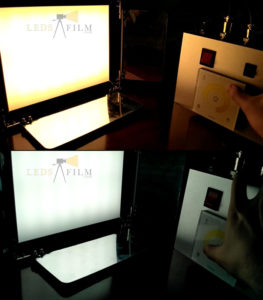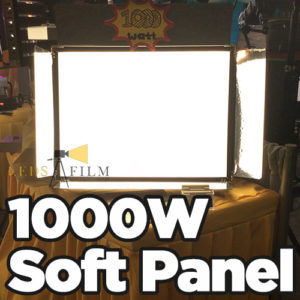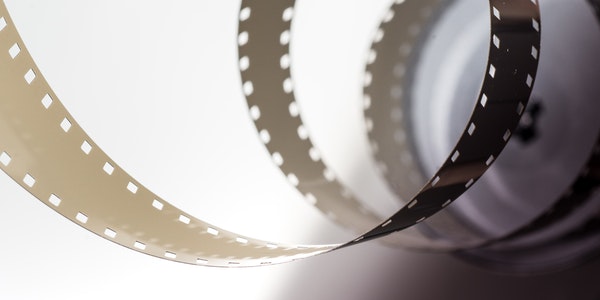Table of Contents
Function and Classification of Montage Technique
Narrative
- Parallel montage
This kind of montage is often shown together in two or more plot lines that occur in different time and space (or at the same time in different places), and they are described separately and unified into a complete structure. Griffith and Hitchcock are both masters who are very good at using this kind of montage. Parallel montage is widely used. First of all, because it is used to process the plot, the process can be abridged to facilitate generalization and concentration, save space, expand the amount of information in the film, and strengthen the rhythm of the film; second, because this technique is a flat list of several clues, mutual Set off and form a contrast, which is easy to produce a strong artistic infection effect. For example, in the film “Southern Expedition and Northern War”, the director used parallel montages to show the scene of the enemy and us occupying the skyscrapers, resulting in a tense rhythm.

- Cross montage
Cross montage is also called alternate montage. It quickly and frequently alternately splice two or several plot lines that occurred in different regions at the same time. The development of one of the clues often affects the other clues, and the clues are interdependent, and finally merge in together. This editing technique can easily cause suspense, create a tense atmosphere, and strengthen the sharpness of conflicts. It is a powerful way to master the emotions of the audience. Thrill films, horror films and war films often use this method to create chase and thrilling scenes. For example, in “Southern Expedition and Northern War”, the three clues of crossing the Dasha River by rushing to the Dasha River and the guerrillas blasting the dam were alternately cut together, showing the thrilling battle.
- Upside down montage
This is a montage that disrupts the structure. It first shows the current state of the story or the event, and then introduces the story. It is a recombination of the “past” and “present” in the concept of the event. It is often transferred into flashbacks with the help of overprints, wipes, voiceovers, narrations, etc. The use of upside-down montages disrupts the sequence of events, but the temporal and spatial relationships still need to be explained clearly, the narrative should still conform to the logical relationship, and event review and reasoning are structured in this way.
- Continuous montage
This kind of montage does not develop with multiple clues like parallel montage or cross montage, but follows a single plot clue, in accordance with the logical sequence of events, and narrates continuously in a rhythmic manner. This kind of narrative is naturally smooth, simple and smooth, but due to the lack of time and space and the change of scenes, it is impossible to directly display the simultaneous plots, it is difficult to highlight the parallel relationship between the plot lines, and it is not conducive to generalization. It is prone to procrastination and lengthy, flat and straightforward narration. sense. Therefore, it is rarely used alone in a film, and is often used in combination with parallel and cross montages, complementing each other.
Performance Montage
The performance montage is based on the sequence of shots. The connected shots contrast and impact each other in form or content, so as to produce rich connotations that a single shot does not have to express a certain emotion or thought. Its purpose is to stimulate the audience’s associations and enlighten the audience’s thinking.
- Lyric Montage
It is a way of expressing thoughts and emotions beyond the plot while ensuring the continuity of narrative and description. Jean Mitre pointed out: Its original intention is not only to narrate the story, but also to render vividly, and it is more focused on the latter. Significant events are broken down into a series of close-ups or close-ups, capturing the essential meaning of things from different sides and angles, and rendering the characteristics of things. The most common lyrical montage, which is most easily felt by the audience, often follows a narrative scene and appropriately cuts into the empty scene that symbolizes emotions and emotions. For example, in the Soviet film “The Country Teacher”, Varvara and Martynov fell in love, and Martynov tentatively asked her if she would wait for him forever. She replied affectionately: “Forever!” Then cut into the scene two shots of blooming flower branches. It is not directly related to the plot, but it appropriately expresses the emotions of the author and the characters.
- Psychological montage
It is an important means of character’s psychological description. It vividly shows the inner world of the character through the combination of picture and lens or organic combination of sound and picture. It is often used to express the character’s dreams, memories, flashes, hallucinations, reveries, thinking and other spiritual activities. This kind of montage uses cross-cutting techniques in editing techniques. Its characteristics are the fragmentation of the picture and the sound image, the discontinuity of the narration, and the jump of the rhythm. The sound and picture image has the strong subjectivity of the people in the play.
- Metaphor montage
Through the analogy of the lens or the scene, it implicitly and vividly expresses a certain meaning of the creator. This technique often highlights some similar characteristics between different things to arouse the audience’s associations, understand the director’s meaning and appreciate the emotional color of the event. For example, Pudovkin combined the shots of the workers’ demonstrations with the shots of the thawing of the spring glaciers in “Mother” to illustrate the unstoppable revolutionary movement. Metaphoric montage combines great generalization power with extremely concise performance techniques, and it often has a strong emotional appeal. However, this technique should be used with caution, metaphor and narrative should be organically combined to avoid blunt and far-fetched methods.
- Contrast montage
Similar to the contrast description in literature, that is, the content (such as poverty and wealth, suffering and happiness, life and death, noble and humble, victory and defeat, etc.) or form (such as the size of the scene, the warm and cold colors, etc.) through the lens or scenes. The strong contrast of sound strength, movement, etc.) creates conflicting effects to express a certain meaning of the creator or strengthen the content and thoughts expressed.
Rational montage
Jean Mitri’s definition of rational montage is: it expresses meaning through the relationship between the pictures, rather than through simple narrative expressions of coherent link after link. The difference between rational montage and coherent narrative is that even if its pictures belong to facts that have actually been experienced, the facts combined according to this montage are always subjective visions. This type of montage was founded by Eisenstein, the main representative of the Soviet school, and mainly includes: “juggling montage”, “reflection montage”, and “thought montage”.
- Juggling Montage
Eisenstein’s definition of juggling montage is: juggling is a special moment, during which all elements are to promote the idea of the director’s intention to convey to the audience into their consciousness, so that the audience can enter the mental state or cause the idea. In the psychological state, to cause emotional shock. This technique can be chosen at will in the content, and is not restricted by the original plot, prompting an effect that can finally explain the theme.
Compared with performance montage, this is a more rational and more abstract form of montage. In order to express a certain abstract rational concept, some scenes that are completely irrelevant to the plot are often used. For example, in the film “October”, when the representative of the Mensheviks made an unpredictable speech, the scene of the hand playing the harp was inserted to illustrate Its “repeated old tune, confuses the audience.” For Eisenstein, the importance of montage is in no way limited to the special way of creating artistic effects, but the style of expressing intentions, the way of transmitting thoughts: through the collision of two lenses, a thought is established, and a series of thoughts creates a kind of The emotional state later, with the help of this stimulated emotion, makes the audience resonate with the thoughts that the director intends to transmit to them.
In this way, the audience is involuntarily involved in this process, willingly to echo the general tendency and general meaning of this process. This is the principle of this great director. After 1928, Eisenstein further advanced the juggling montage into a “dialectical form of film”, based on the symbolism of the visual image and the logic of the inner meaning, while ignoring the content to be expressed, and even fell into the maze of pure theory. It also brings creative mistakes. Later generations learned his lesson, and the use of juggling montages in modern movies is more cautious.
- Reflection Montage
It is not like a juggling montage to express abstract concepts at will to insert symbolic pictures that have nothing to do with the content of the plot. Instead, the things described and the things used as metaphors are in the same space, and they are interdependent: or for Contrast with this event, either to determine the reaction between things that are grouped together, or to reveal similar events contained in the plot through reflection and association, so as to act on the senses and consciousness of the audience.
For example, in “October”, Kerensky was crowded by ministers to the Winter Palace, and an upward shot showed a pillar above his head. There was a sculpture on the head of the pillar, which seemed to cover Kerensky’s head. The halo on the top makes the dictator appear supremely honorable. The reason why this shot is not blunt is that Eisenstein used a sculpture in a real set, a physical object that exists in the real theater space. He processed it, but did not make it different from the plot. Related objects are attractive.
- Thought Montage
This was created by Vertov, the method is to use the documentary materials in the news film to re-arrange and express a thought. This montage form is an abstract form because it only expresses a series of thoughts and emotions inspired by reason. The audience watched indifferently, creating a certain “distance effect” between the screen and them, and their participation was completely rational. “Common Fascism” directed by Roma is a typical work.
Theoretical Discussion on Montage Techniques
Neither Griffith nor his country’s successors have thought of summarizing or exploring the laws and theories of montage. The first to earnestly explored the mystery of montage was the Soviet director Kurishov and his students Eisenstein and Pudovkin. Their doctrines in turn influenced film theorists and film artists in Europe and the United States.
Eisenstein
Eisenstein has a famous saying about the montage theory: “The alignment of two montage shots is not the sum of two numbers, but the product of two numbers.” In the words of Hungarian film theorist Bella Balaz, it means “up and down. Once the lenses are connected, the unusually rich meaning hidden in each lens is emitted like a spark.” For example, in “The Country Teacher”, Varvara answered “forever” after the two shots of flowering branches. It expresses the feelings of the author and the characters in the play.
Eisenstein applied dialectics to montage theory, emphasizing the conflict between opposite shots. For him, a lens is not an “independent thing”, only when it interacts with the opposite lens can it arouse emotional feelings and an understanding of the subject. He believes that individual shots are just “images”, and only when these images are combined can they form a meaningful “image”.
It is this “power of montage” that makes the combination of shots not a bricklaying narrative, but a “highly exciting narrative full of emotions”. It is the “power of montage” that makes the audience’s emotions and reason into the creative process. , To experience the same creative path that the author has experienced when creating images.
